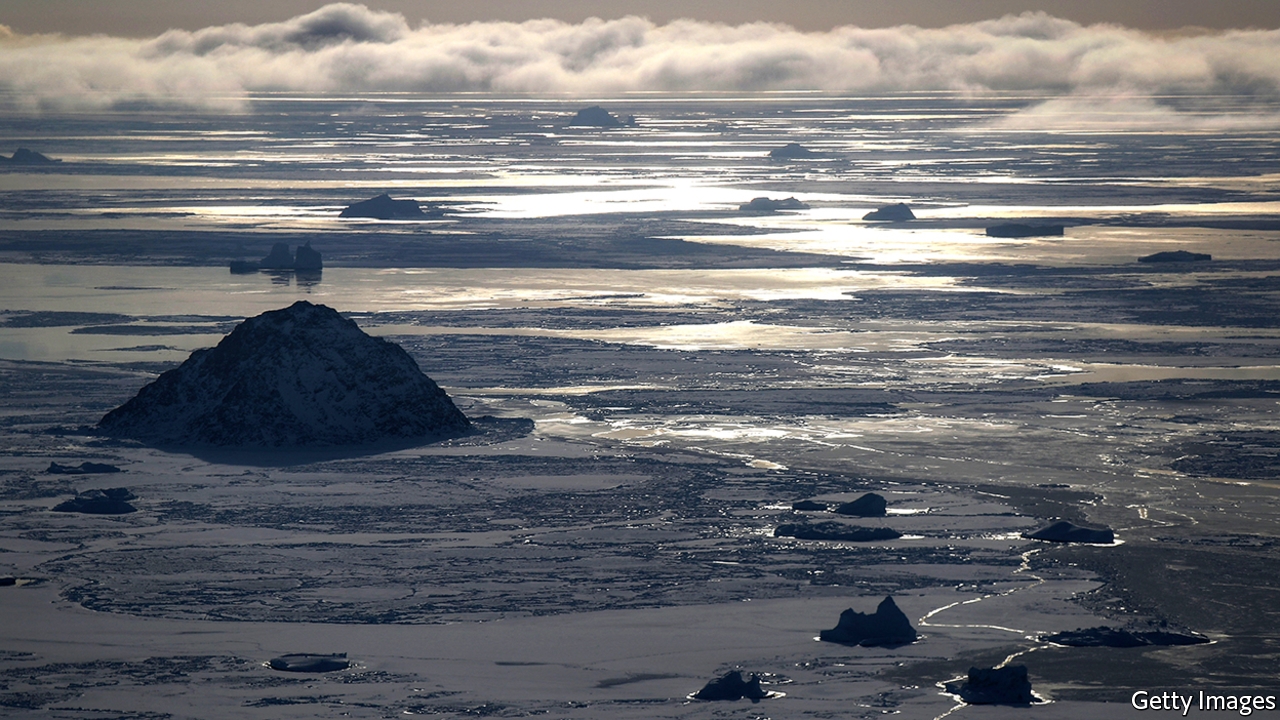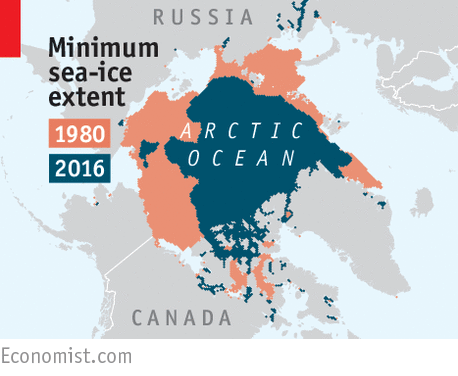Climate change: The Arctic as it is known today is almost certainly gone

 THOSE who doubt the power of human beings to change Earth’s climate should look to the Arctic, and shiver. There is no need to pore over records of temperatures and atmospheric carbon-dioxide concentrations. The process is starkly visible in the shrinkage of the ice that covers the Arctic ocean. In the past 30 years, the minimum coverage of summer ice has fallen by half; its volume has fallen by three-quarters. On current trends, the Arctic ocean will be largely ice-free in summer by 2040.
THOSE who doubt the power of human beings to change Earth’s climate should look to the Arctic, and shiver. There is no need to pore over records of temperatures and atmospheric carbon-dioxide concentrations. The process is starkly visible in the shrinkage of the ice that covers the Arctic ocean. In the past 30 years, the minimum coverage of summer ice has fallen by half; its volume has fallen by three-quarters. On current trends, the Arctic ocean will be largely ice-free in summer by 2040.
Climate-change sceptics will shrug. Some may even celebrate: an ice-free Arctic ocean promises a shortcut for shipping between the Pacific coast of Asia and the Atlantic coasts of Europe and the Americas, and the possibility of prospecting for perhaps a fifth of the planet’s undiscovered supplies of oil and natural gas. Such reactions are profoundly misguided. Never mind that the low price of oil and gas means searching for them in the Arctic is no longer worthwhile. Or that the much-vaunted sea passages are likely to carry only a trickle of trade. The right response is fear. The Arctic is not merely a bellwether of matters climatic, but an actor in them (see Briefing).
The current period of global warming that Earth is undergoing is caused by certain gases in the atmosphere, notably carbon dioxide. These admit heat, in the form of sunlight, but block its radiation back into space, in the form of longer-wavelength infra-red. That traps heat in the air, the water and the land. More carbon dioxide equals more warming—a simple equation. Except it is not simple. A number of feedback loops complicate matters. Some dampen warming down; some speed it up. Two in the Arctic may speed it up quite a lot.
One is that seawater is much darker than ice. It absorbs heat rather than reflecting it back into space. That melts more ice, which leaves more seawater exposed, which melts more ice. And so on. This helps explain why the Arctic is warming faster than the rest of the planet. The deal on climate change made in Paris in 2015 is meant to stop Earth’s surface temperature rising by more than 2°C above pre-industrial levels. In the unlikely event that it is fully implemented, winter temperatures over the Arctic ocean will still warm by between 5° and 9°C compared with their 1986-2005 average.
The second feedback loop concerns not the water but the land. In the Arctic much of this is permafrost. That frozen soil locks up a lot of organic material. If the permafrost melts its organic contents can escape as a result of fire or decay, in the form of carbon dioxide or methane (which is a more potent greenhouse gas than CO2). This will speed up global warming directly—and the soot from the fires, when it settles on the ice, will darken it and thus speed its melting still more.
MORE!!!:
http://www.economist.com/news/leaders/21721379-current-trends-arctic-will-be-ice-free-summer-2040-arctic-it-known-today

